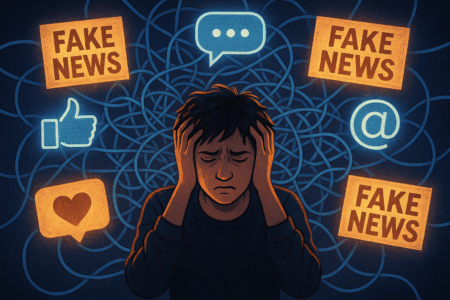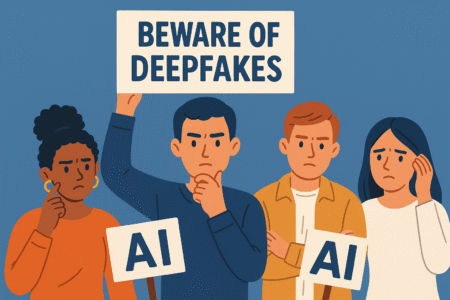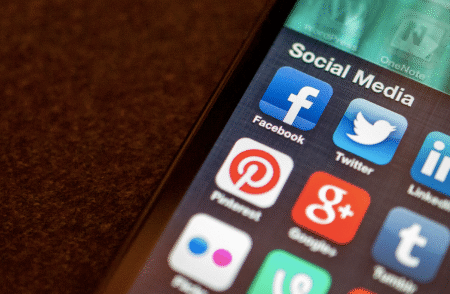The world of 2025 is one where opportunity and uncertainty collide. On one hand, humanity has never been more connected, technologically advanced, and resourceful. On the other, the World Economic Forum’s Global Risks Report 2025 warns of a cluster of social threats that are not only immediate but deeply interconnected: state-based armed conflict, extreme weather events driven by climate change, misinformation, and the societal impacts of artificial intelligence (AI). These issues demand urgent attention, not just from governments and institutions, but from every level of society. State-Based Armed Conflict: A Return to Instability Conflict is no stranger to human history, but its resurgence in 2025 underscores how fragile peace can be. Wars fueled by territorial disputes, political rivalries, and resource scarcity continue to displace millions, destabilize regions, and deepen humanitarian crises. Beyond the battlefield, these conflicts ripple outward—creating refugee crises, economic instability, and cultural fractures. To address this, societies must champion diplomatic solutions and peacebuilding initiatives rather than resorting to prolonged violence. Strengthening international institutions like the United Nations, supporting grassroots peace movements, and fostering intergovernmental dialogue can pave the way for negotiated settlements. Education also plays a critical role in countering narratives that glorify violence, helping young people envision futures built on cooperation rather than division. Climate Change and Extreme Weather: Nature’s Alarming Signals Climate change is no longer a distant threat; it is a lived reality. In 2025, extreme weather events—heatwaves, floods, droughts, and hurricanes—are disrupting food security, damaging infrastructure, and endangering lives. Vulnerable communities are bearing the brunt, while wealthier nations grapple with the mounting costs of recovery. The path forward requires collective climate resilience. Governments must accelerate commitments to renewable energy and stricter emissions targets, while industries should embrace green technologies and sustainable practices. But equally important is individual responsibility: reducing waste, adopting energy-efficient lifestyles, and supporting eco-conscious businesses. Local initiatives, such as community-led clean-up drives and sustainable farming projects, can make global goals more tangible and impactful. Misinformation: The Digital Pandemic In an age of constant connectivity, information travels faster than ever before—but so does misinformation. False narratives about politics, health, and science are shaping public opinion, dividing communities, and eroding trust in institutions. The viral spread of misinformation often triggers unrest, undermines democratic processes, and, in some cases, puts lives at risk. Combatting this requires a multi-pronged strategy. Social media platforms must be held accountable for monitoring harmful content while ensuring freedom of expression. Fact-checking organizations and independent journalism need greater visibility and support to provide accurate narratives. At the grassroots level, cultivating digital literacy is key. Schools, universities, and even workplaces should teach individuals how to critically assess sources, question online claims, and resist the emotional pull of sensationalized content. The Societal Impact of Artificial Intelligence Artificial intelligence has transformed industries, communication, and even healthcare. Yet, its rapid rise raises concerns: job displacement due to automation, ethical dilemmas in AI decision-making, and the potential misuse of generative AI in spreading disinformation. Left unchecked, AI risks deepening inequality, empowering surveillance states, and blurring the lines between reality and manipulation. But AI is not inherently harmful—it is a tool. Harnessing its benefits while minimizing its risks requires strong governance frameworks. Governments must collaborate with technology leaders to establish regulations around data privacy, algorithm transparency, and ethical usage. At the same time, society should invest in reskilling programs, preparing workers for jobs of the future rather than leaving them behind. The responsible use of AI in education, healthcare, and sustainability could, in fact, be one of the strongest weapons against inequality and environmental decline. Building a Resilient Society What connects all these challenges—conflict, climate change, misinformation, and AI—is their ability to destabilize trust. When trust between governments, citizens, and institutions breaks down, crises deepen. Therefore, the ultimate solution lies in rebuilding social cohesion. Communities must prioritize inclusivity, equity, and collaboration, ensuring no group feels left behind. Every individual has a role: advocating for peace, reducing their carbon footprint, questioning digital content, or learning about AI ethics. When collective action meets institutional reform, societies can turn today’s risks into tomorrow’s opportunities. The Global Risks Report is a wake-up call, but it is not a prophecy of doom. It is a challenge—a reminder that humanity has the creativity, resilience, and resources to overcome even the greatest threats. If we act decisively, cooperatively, and ethically, the very risks we fear today can become the driving force behind a more just, sustainable, and hopeful tomorrow. Keep Reading Foramz for your daily dose of moral support
In the last blog, we talked about ways we can save ourselves from the hazards of DeepFake. We all have to face the fact that deepfakes are not going anywhere. They are getting better, faster, and convincing day by day. We have already seen how powerful AI-generated content can blur the lines between fact and fiction, turning political speeches, product endorsements, or even private conversations into tools of manipulation. This is not just a technological nuisance which is a cultural and moral crisis. But amidst this torrent of synthetic content, there is one thing AI can’t replicate: human responsibility. While it may feel like we’re powerless in the face of this deepfake deluge, the truth is quite the opposite. Our greatest defense isn’t just technology—it’s awareness, accountability, and an unwavering moral compass. We don’t just need sharper eyes. We need sharper minds. There are tools and browser extensions. Yes, there are tools and browser extensions. Yes, AI is being used to detect AI. But before you install the latest detection plugin, ask yourself: Am I being a responsible digital citizen? Because it starts with you. It starts with us. If we let convenience override caution, or if we keep forwarding sensational videos without checking their sources, we become part of the problem. Deepfakes, in many ways, are not just an external threat. They’re a mirror held up to society, exposing how quickly we believe what we want to believe, how we often value drama over truth, and how easy it is to manipulate our emotions with a few cleverly edited frames. What can we do to slow down this process of continuous wreckage? We slow down. We question. We observe.We teach our children, guide our elders, and share with our peers.We make it our personal mission to ensure that truth doesn’t get drowned in the noise of illusion. If you’re a teacher, introduce students to media literacy. If you’re a parent, talk to your kids about the dangers of manipulated content. If you’re a creator, add watermarks, disclaimers, and transparency to your work. If you’re just a social media user, pause before hitting “share.” We must start treating digital content like we treat food—check the source, read the label, and don’t consume blindly. On a broader scale, we need to push for stronger verification systems. We need digital platforms to step up—not just with small print labels that say “AI-generated,” but with clear visual indicators, provenance tools, and a no-tolerance policy for malicious deepfakes. And above all, we need collective digital ethics—a culture where we hold ourselves and others accountable for spreading falsehoods. Because no matter how advanced AI becomes, it is still humans who choose to deceive, and it is still humans who suffer the consequences. In a world where anyone’s face, voice, and words can be faked in seconds, the real power lies not in coding lines of defense, but in drawing moral lines. Deepfakes may steal identity, but only you can protect your integrity. So the next time you see a shocking video of a politician saying something outrageous, or a viral clip that seems just a little too perfect—pause. Let your skepticism kick in. Let your ethics guide you. And let truth—not technology—be your compass. Because while AI can fabricate many things, it cannot generate the most powerful weapon of all: An aware and awake human being. Keep Reading Foramz for your daily dose of moral support.
So far, we have talked about all the possible ways through which deepfakes can be a big issue for us, in what ways they can harm our social life, why they are dangerously addictive, deceptive, and disturbingly easy to make. From AI-generated politicians giving fake speeches to influencers endorsing products they have never even heard of. Deepfake revolution is ot just knocking at the door, it is already chilling on your couch. The main question that lies in our minds is, what can we do about it? There are multiple ways through which we can differentiate the fake from reality. You don’t really need a PhD in computer vision to actually spot it; you just need to be a bit more observant. To do that, you will have to notice the following things about the deepfake: 1. Watch the eyes and mouth and the eyes: Deepfakes often have strange blinking patterns or unnatural lip syncs. If the mouth moves weirdly or the eyes look “dead” or glassy, then it is a red flag. DEEP FAKE SPOTTED. 2. Check Lighting inconsistencies: Fake videos often have uneven lighting between the face and the background 3. Glitches in facial expressions: Look closely for overly smooth skin, jerky head movements, or parts of the face that seem to “melt” briefly. 4. Check lighting inconsistencies: Fake videos often have uneven lighting between the face and the background. Use Technology Against Itself AI has made this mess, but AI can help clean it up, too. Several companies and research labs are working on deepfake detection tools, some of which are available to the public. You can use these AU tools to analyze videos and give a confidence score of whether it’s fake or not. Other AI helps you. track and detect deepfake threats globally. A browser can plugin that flags fake media on the go. There are several mobile tools that detect known fake audio/video databases. You can install one software and share the same for additional safety. Lock Down Your Face and Voice If you think that you are not human enough to be faked? Think again. AI models do ot need much to learn your face or voice, sometimes just a few seconds of a podcast or Instagram video is enough to initiate AI models. To avoid this, you should Demand Verification Layers Let us face it, you can not check every video you see. So there should be some platforms that need to step up. Start demanding medi authenticity layers on various apps. Educate Everyone Let us face it, educating and awareness go a long way. You might be a Gen Z all tech-savvy and handy with AI, but not everyone has their fair share of knowledge on AI. Especially the elderly, like grandma forwarding that WhatsApp video of a “famous doctor” saying aliens created COVID? There is no change in that. What the public needs is literacy campaigns, just like we had for phishing scams and fake news. There should be awareness workshops held in schools, colleges, and workplaces. Create bite-sized videos on spotting fake videos and share lisstof trusted news sources and how to verify the content. Encourage yourself in the intergenerational tech learning platforms because deepfakes can not discriminate by age. Keep Reading Foramz.com for your daily source of moral support.
In a more digitized world, fact and fiction have been blurred perilously. From the feeds of social media to news websites, we now inhabit a world where believing is no longer seeing. The twin menaces of misinformation and deepfakes are not hypothetical—they are redefining our views, cheating institutions, and eroding democratic confidence worldwide. The term deepfake refers to hyper-realistic synthetic audio, images, or video created using generative AI. What began as a niche tech curiosity has turned into an omnipresent threat. According to a recent global survey, 60% of people were exposed to at least one deepfake video in the past year, and over 95% of these videos were generated using open-source tools like DeepFaceLab. At the same time, the economic toll is astronomical: global fraud losses attributed to deepfakes already amount to tens of billions, with estimates projecting $40 billion in losses by 2027. These fakes are not raw make-believe. A TIME probe into technology such as Google’s Veo 3 found that deepfake videos can show riots, political speeches, election tampering, and more—with sound, realistic movement, and situational realism so intense that they’re virtually indistinguishable from real life . Why deepfakes are dangerous ? Political deepfakes pose a danger to democracy itself. Threats during the 2024 European and American elections highlighted potential interference. Although a Financial Times analysis subsequently discovered only 27 viral AI election deepfakes in the UK, France, and EU, and just 6% of U.S. election disinformation used generative AI—the danger is still foreboding . Deepfake scams are flourishing. Frauds increasingly use celebrity faces and voices to deceive innocent victims—resulting in huge amounts of money lost. The FBI found that almost 40% of scam victims in 2023 were presented with deepfake material, and deepfakes-related fraud in Asia‑Pacific alone grew by 1,530% in one year. 2. Non-consensual exploitation For others, the danger is highly intimate. People—particularly women and adolescents—are becoming victims of “nudify” apps, sextortion, and unwanted deepfakes. There are rampant cases in Australia and South Korea that have prompted immediate legislative and educational action . Humans are not immune. Research indicates that individuals accurately detect only 24–62% of deepfakes, depending on the medium, and tend to overestimate their ability to do so. Add generative AI words and audio into the equation, and we’re immersed in a whirlpool of manipulative content. Deepfakes flourish where virality is designed. X, Meta, and TikTok are such hotspots: recent Indian data indicates 77% of disinformation begins on social media, with Twitter and Facebook at the forefront. Volatile, algorithmic content goes further and faster than rational facts, so disinformation is difficult to contain . Tech-driven detection AI detection software is competing to stay ahead. Initiatives such as Texas State University’s model registered 96.4% detection rate in 2023, and Chinese initiatives reported more than 90% accuracy. India’s very own Deepfakes Analysis Unit employs WhatsApp-based flagging to examine content before national elections. Media literacy & public awareness Experts insist that identifying pixel-level errors is not sufficient. The AI model creations these days are too sophisticated. Users should, instead, raise questions of source credibility, take motive into account, and crosscheck through credible journalism. Countries such as Australia are implementing deepfake teaching in schools as part of wider digital literacy initiatives . Regulatory action Governments across the globe are stepping up. The U.S. has just passed the TAKE IT DOWN Act (May 19, 2025), requiring platforms to quickly take down non-consensual intimate deepfakes. The AI Act is implementing risk-based regulation in Europe. India is weighing targeted reform under its draft Digital India Act . The battle against deepfakes and disinformation requires a multi-fronted approach: Only by swift, concerted action can society preserve truth and trust. The age of deepfake isn’t arriving—it’s already arrived. Real-world effects—from subverting elections to destroying lives—are already playing out. Yet there’s also reason for hopeful restraint: human beings are waking up, technologies are improving, and laws are adapting. By equipping ourselves with understanding, technologies, and cooperation, we can reclaim fact-driven discourse before fiction seeps too deeply into everyday life. Keep reading Foramz for your daily dose of moral support.
In the last Blog, we saw how AI is taking its speed and taking over the tech world. How AI has no longer remained a futuristic concept. It has become an integral part of our everyday lives and workplaces. From automating mundane tasks to analyzing vast amounts of data in seconds, AI promises tremendous efficiency and innovation. Today, this advancement also brings a pressing challenge: the replacement of human jobs. AI is impacting various sectors, it is important to have awareness of how AI is taking over these sectors, so that individuals can prepare wisely for the future. One of the most vulnerable sectors is customer service. AI-powered chatbots and virtual assistants are increasingly being used. customer inquiries, complaints, and support tasks. These systems can work 24/7 without any fatigue, by addressing multiple customers simultaneously. Jobs such as a call center agent and a customer support representative are at risk of being replaced or drastically reduced. Another sector feels the impact is in administrative and clerical work AI systems can schedule calendars, schedule appointments, filter mail, and enter data with speed and accuracy that human capacity cannot match. Administrative assistants and data entry clerks tend to do repetitive tasks, are subject to automation, leaving fewer human jobs for these types. Industrial manufacturing and warehousing have for a long time experienced automation via robotics, but AI is going a step further. AI-powered robots and smart machines are now undertaking assembly line work, packing, and stock management with high accuracy and minimal mistakes. This has put manual work in factories and warehouses at risk, as businesses try to save money and enhance efficiency with automated systems. In transport and delivery, autonomous vehicles and drones are revolutionizing the scene at a fast pace. Delivery drones and autonomous trucks are able to drive around the clock without break or fatigue. This technology jeopardizes drivers and delivery agents, potentially replacing millions of jobs globally as the technology advances and regulatory barriers are broken. The retail industry is also transforming under the control of AI. Self-service checkout lanes, AI-based inventory management, and AI-based personalized shopping assistants through machine learning are eliminating the requirement of cashiers and stock clerks. Although this could help improve customer experience, it also poses a threat to traditional retail employment. Equally so is the accounting and finance industry undergoing a transformation. Algorithms using AI can scan financial information, create reports, flag fraudulent activity, and even place trades quicker than human experts. Low-end accounting and finance jobs that generally entail repetitive data processing are more being taken over by machines, leaving employees under pressure to reskill or seek alternative niches. In healthcare administration, AI can aid in patient scheduling, record keeping, and even diagnostic assistance. These functions can enhance the efficiency of services but also decrease the need for administrative personnel who undertake routine, non-clinical work. Even the judicial world cannot escape. AI tools are able to scan legal documents, analyze case law, and make prognostications about legal outcomes, which impacts jobs traditionally performed by paralegals and junior attorneys. This trend encourages legal professionals to concentrate more on sophisticated, strategic work instead of time-consuming paperwork. Despite all of these challenges, AI is also generating new job opportunities. There is increasing demand for AI engineers that develop and operate smart systems, data scientists that explain insights produced by AI, and AI ethics advisors who guarantee that technology is being utilized responsibly. Moreover, new careers are arising that enable human-AI collaboration, integrating technological expertise with characteristically human abilities such as creativity and emotional understanding. To succeed in this evolving world, ongoing learning and flexibility are crucial. Employees need to be open to improving their skills, adopting new technologies, and being adaptable in their professions. Instead of dreading AI as a job stealer, it’s healthy to perceive it as a productivity-enhancing tool that could create new opportunities. In conclusion, AI is undeniably reshaping the world of work. While some sectors face job losses, others are evolving or emerging, offering fresh opportunities. Staying informed, adaptable, and proactive will be key to navigating this AI-driven future successfully. Keep reading Foramz for your daily dose of Moral support.
The conversation around Artificial Intelligence (AI) and its impact on jobs is no longer a distant warning, it is a present-day reality. From retail and customer service to fiancae and journalism., AI has taken over the industries. Healthcare industries also have AI, which is transforming healthcare at a pace that is both exhilarating and unsettling. What was once confined to science fiction is now reshaping how we work, hire, and even define productivity. While AI brings remarkable advancements in efficiency and innovation, it raises critical concerns for us human professionals. It raises unsettling questions like: Are human workers becoming obsolete? Will automation trigger mass unemployment, or are we simply transitioning into a new kind of workforce? Artificial Intelligence, like machine learning, natural language processing, and robotic process utomatiare being adopted globally to handle tasks once performed by humans. Some of the key areas of job disruption include Customer Service, Manufacturing, Transportation, Finance, and Content Creation. Jobs Most at Risk vs. Jobs Being Created Researchers (World Economic Forum and McKinsey reports, among others) agree that AI will replace and create jobs: Most at risk: data entry clerks, telemarketers, bookkeeping clerks, and assembly line workers. In demand: AI engineers, data scientists, cybersecurity specialists, human-machine interaction designers, and AI ethicists. It is an expression of duality rather than disappearance of work. As repetitive or rule-based work is being assumed by AI, it is creating opportunities for new types of work demanding skillfully human abilities such as empathy, creativity, ethical thinking, and problem-solving at a deeper level. In spite of the apprehensions, AI is not endowed with the emotional quotient, moral sense, and flexibility of the human mind. In most professions, including education, counseling, care giving, and management, the human element cannot be replaced. The next generation of work will probably witness a synergy between humans and machines, with AI doing the grunt work and humans guiding the strategic, ethical, and relationship dimensions. AI is not only displacing jobs—it’s transforming them. Adaptability is the secret to success in this age: re-skilling, up-skilling, and embracing a culture of lifelong learning. Governments, corporations, and schools have a vested interest in getting society ready for this transformation. Instead of fighting automation, we need to ask: How do we harness AI to work with us, not against us? In our next blog, we will discuss the problems that AI can create for us. Keep Reading Foramz for your daily dose of Moral Support.
Social Media is an increasing concern in today’s world. With increased influencers, brand deals, and dopamine kicks, social media proves to be a hazard to teenagers’ health. The Indian Parliamentary panel has been struggling to find a solution to this issue. In a recent turn of events on May 6th, the Parliamentary Standing Committee on Communications and Information Technology wrote to the Ministry of Electronics and IT and the Ministry of Information and Broadcasting. After the Pahalgam terror attack, a parliamentary panel has asked the government to furnish details on the action it plans to take against social media platforms and influencers who seem to be working against the interest of the country, which is likely to incite violence.” The Parliamentary Standing Committee on Communications and Information Technology wrote to the secretary, Ministry of Electronics and IT, and the secretary, Ministry of Information and Broadcasting, seeking these details. The office memorandum from the panel, say sources, requested the ministries for details of ‘contemplated action taken to ban such platforms under IT Act 2000 and Information Technology (Intermediary Guidelines and Digital Media Ethics Code) Rules, 2021’. The sources said that the panel has sought this information by May 8, 2025. BJP MP Mr. Nishkant Dubey headed to the parliament’s Standing Committee on Communications and Information Technology. There have been as many as 26 people who were killed in the April 22 Pahalgam terror attack, and there has been a rise in cross-border hostility between India and Pakistan after the incident. X handles of several Pakistani political leaders, including Defence Minister Khawaja Asif, Minister Abdullah Tarar, former Prime Minister Imran Khan, and former minister Bilawal Bhutto, have been withheld in India as tensions between the two nations remain high. Several FIRs were filed against social media users over their comments about the Pahalgam terrorist attack. Security agencies across the country remain on high alert as tensions escalate between the two nations following the attack. Accusing Pakistan of fostering cross-border terrorism, India has announced a series of punitive measures, including cancelling visas for Pakistani nationals, closing the border and airspace, downsizing diplomatic missions, suspending trade, and putting the Indus Waters Treaty under review, among other steps. Keep Reading Foramz for more news







